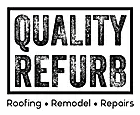New Paragraph
Nashville Siding Services
Siding Installation, Repairs, & Replacement
When it comes to home exteriors, siding plays a vital role in both enhancing the aesthetics and protecting the structure from various elements. Siding refers to the material that covers the exterior walls of a house, providing an additional layer of insulation, weather resistance, and visual appeal. It is a popular choice among homeowners due to its versatility, durability, and low maintenance requirements.
Siding serves as a protective barrier against the elements, shielding your home from rain, wind, snow, and UV rays. It prevents moisture from infiltrating the walls, which can lead to mold, rot, and structural damage. By acting as a barrier, siding also helps to maintain a comfortable indoor temperature by insulating your home. This insulation property can help reduce energy consumption, lower heating and cooling costs, and contribute to a more sustainable lifestyle.
One of the primary reasons people choose to install siding is its ability to enhance the curb appeal of their homes. With a wide range of materials, colors, and textures available, siding offers endless design possibilities to suit any architectural style or personal preference. Whether you prefer a traditional look with classic wood siding or a modern aesthetic with sleek metal panels, there is a siding option to match your vision.
By investing in quality siding, you can enhance the beauty of your home, increase its value, and ensure long-term durability against the elements.
The Advantages and Disadvantages of Siding
Siding is a popular choice for homeowners looking to enhance the aesthetics and protect the exterior of their homes. With a wide range of materials and styles available, siding offers numerous advantages. However, it's important to consider the potential disadvantages as well. Let's explore both sides of the coin when it comes to using siding on a home.
Advantages of Using Siding
Enhanced Aesthetics
One of the primary advantages of siding is its ability to improve the curb appeal of a home. With various materials, colors, and textures to choose from, siding allows homeowners to customize the appearance of their exteriors to match their personal style or the architectural design of the house.
Protection from the Elements
Siding acts as a protective barrier against harsh weather conditions, such as rain, wind, snow, and UV rays. It prevents moisture from seeping into the walls, which can lead to rot, mold, and structural damage. Additionally, siding can withstand extreme temperatures, helping to maintain a comfortable indoor environment.
Low Maintenance
Many siding materials, such as vinyl or fiber cement, require minimal maintenance. They are resistant to rot, pests, and fading, eliminating the need for frequent repairs or repainting. This low maintenance aspect saves homeowners time and money in the long run.
Energy Efficiency
Siding can contribute to improved energy efficiency by providing an additional layer of insulation. It helps to regulate the indoor temperature, reducing the reliance on heating and cooling systems. This, in turn, can lead to lower energy consumption and reduced utility bills.
Disadvantages of Using Siding
Cost
While some siding materials, like vinyl, are relatively affordable, others can be costly. High-end options such as wood or composite siding can come with a significant price tag. Additionally, the installation costs of siding can vary depending on the complexity of the project and the chosen material.
Limited Lifespan
Although many siding materials are durable, they do have a limited lifespan. For instance, vinyl siding can last for several decades, while wood siding may require more frequent maintenance and replacement. It's important to consider the longevity of the chosen siding material and factor in potential replacement costs.
Environmental Impact
Some siding materials, such as vinyl, are made from non-renewable resources and can have a negative impact on the environment during production and disposal. However, there are eco-friendly options available, such as fiber cement or composite siding, which are made from recycled materials or sustainable sources.
Potential for Damage
While siding provides protection against the elements, it is not entirely immune to damage. Severe weather conditions, such as hail or strong winds, can cause dents, cracks, or even detachment of siding panels. Regular inspections and maintenance are essential to identify and address any issues promptly.
By weighing these factors and selecting the right siding material for your home, you can make an informed decision that suits your needs, preferences, and budget. Feel free to contact our team with any questions you may have about what the right choice is for you.
Types of Siding
When it comes to choosing the right siding for your home, there are several options available, each with its own set of advantages and disadvantages. Siding not only enhances the aesthetic appeal of your house but also serves as a protective barrier against the elements. To help you make an informed decision, let's explore the various types of siding and their pros and cons.
Vinyl Siding
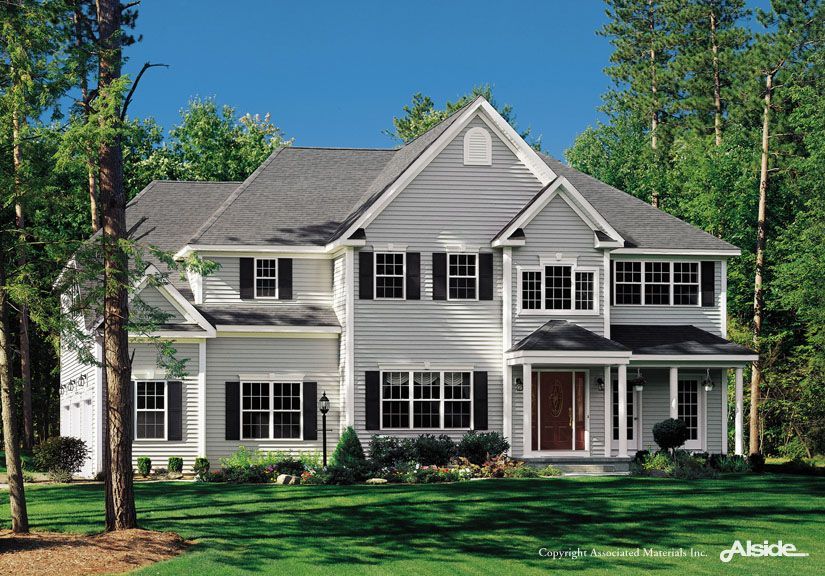
Vinyl siding is a popular choice due to its affordability, low maintenance requirements, and versatility. It comes in a wide range of colors and styles, allowing homeowners to achieve the desired look for their homes.
Vinyl siding is also resistant to rot, insect damage, and fading. However, it may become brittle over time, especially in extreme weather conditions. Additionally, vinyl cannot be painted, so if you desire a change in color, you would need to replace the entire siding.
Wood Siding
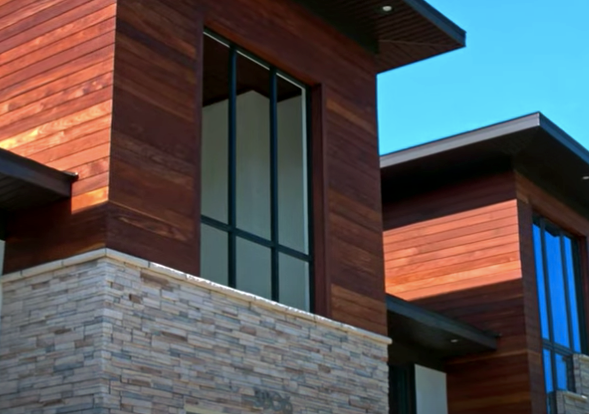
Wood siding offers a timeless and natural look that many homeowners find appealing. It can be painted or stained in various colors, providing flexibility in design choices.
Wood is also an excellent insulator, reducing energy consumption. However, wood siding requires regular maintenance, including painting or staining every few years to protect it from rot, pests, and weather damage. It is also more susceptible to fire, moisture, and termites compared to other siding materials.
Fiber Cement Siding
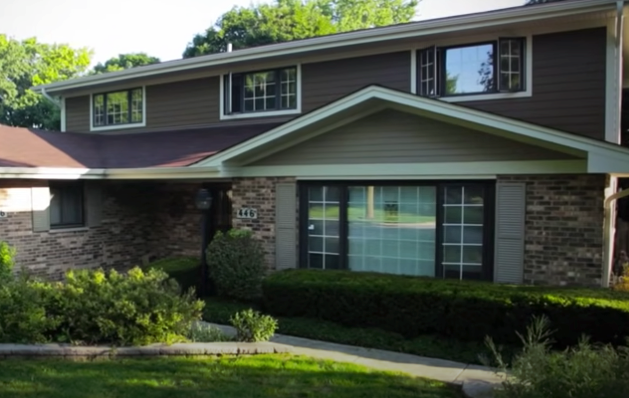
Fiber cement siding is a durable and low-maintenance option that replicates the appearance of wood, stucco, or masonry. It is resistant to rot, pests, and fire, making it a popular choice for homeowners seeking longevity and protection.
Fiber cement siding is also highly durable, with some manufacturers offering warranties of up to 50 years. However, it is heavier and more challenging to install than other types of siding, requiring professional assistance. Additionally, it can be more expensive than vinyl or wood siding.
Aluminum Siding
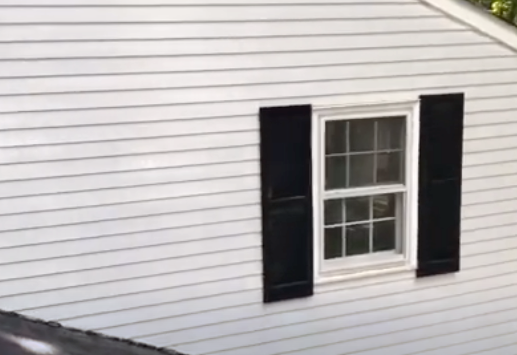
Aluminum siding is known for its durability, resistance to rust and fire, and low maintenance requirements. It is available in various styles and colors, allowing for customization.
Aluminum siding is lightweight and easy to install, reducing labor costs. However, it can dent easily, making it prone to damage from hail or other impacts. It also lacks insulation properties, which can result in higher energy bills. Over time, aluminum siding may fade or develop a chalky appearance, requiring repainting or refinishing.
Brick Siding
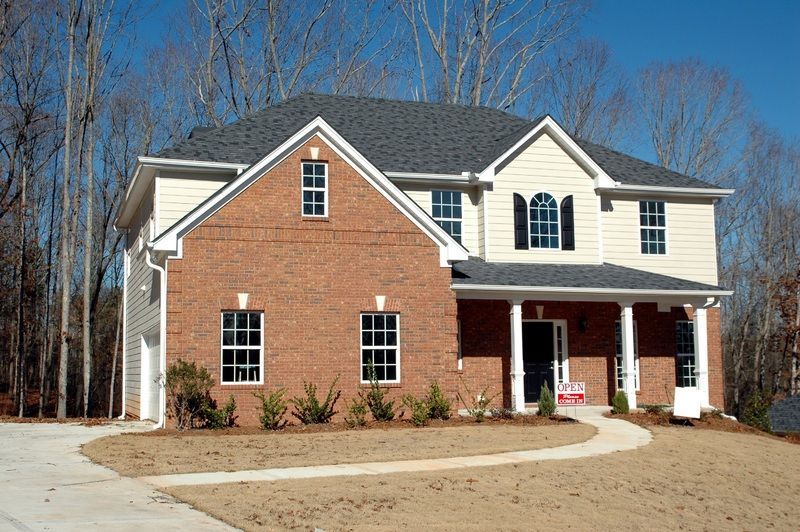
Brick siding offers a classic and elegant look that adds value to any home. It is highly durable, weather-resistant, and requires minimal maintenance.
Brick siding is also an excellent insulator, helping to regulate indoor temperatures and reduce energy costs. However, brick siding is expensive to install, and the process can be time-consuming. It also requires a solid foundation and skilled masons for proper installation. Brick siding may also crack or deteriorate over time, requiring repairs.
Stucco Siding
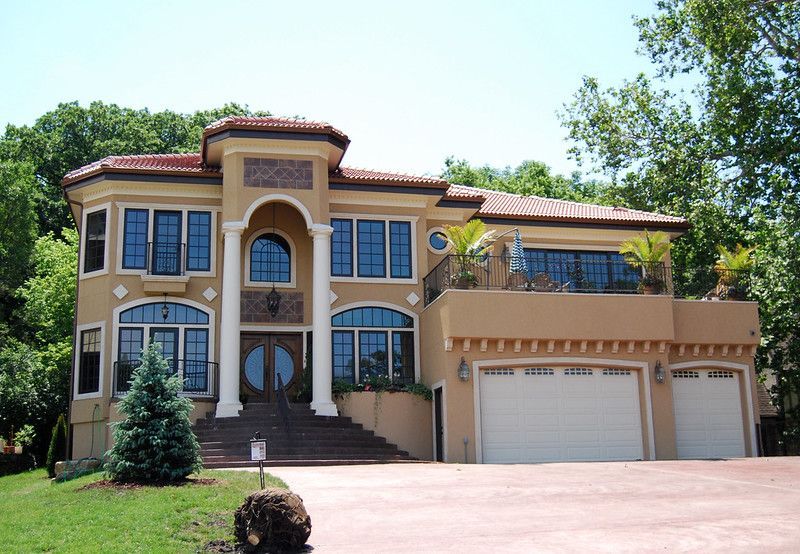
Stucco siding provides a unique and textured appearance that can enhance the curb appeal of your home. It is durable, fire-resistant, and requires minimal maintenance.
Stucco is also an excellent insulator and can help reduce energy consumption. However, stucco can be expensive to install, and it is not suitable for areas with high moisture or frequent seismic activity. Cracks can also develop over time, requiring repairs and refinishing.
Choosing the right siding for your home involves considering factors such as budget, maintenance requirements, climate conditions, and desired aesthetics. Consulting with professionals and considering long-term costs and benefits will ultimately help you make the best decisi
Siding Installation in Nashville
Installing siding on a home is a significant undertaking that can transform the appearance and functionality of the property. Whether you're replacing old siding or having it installed for the first time, understanding the process is essential. Let's explore the step-by-step guide to installing siding on a home.
Prepare the Surface: Before installing siding, it's crucial to prepare the surface properly. This involves removing any existing siding, repairing damaged areas, and ensuring a clean and smooth surface. If necessary, we apply a moisture barrier or house wrap to protect against water infiltration.
Measure and Calculate: Accurate measurements are vital to ensure the right amount of siding is purchased. We measure the height and width of each wall, accounting for doors, windows, and other openings. Then we calculate the square footage of each wall and add them together to determine the total amount of siding needed.
Choose the Siding Material: Select the siding material that best suits your needs and preferences. Consider factors like durability, maintenance requirements, climate resistance, and aesthetic appeal. Popular options include vinyl, wood, fiber cement, aluminum, brick, and stucco.
Install Starter Strips: Starter strips are essential for proper siding installation. These strips are typically made of metal or plastic and are installed at the bottom of the wall. They provide a secure base for the first row of siding and help ensure a straight and level installation.
Corner Posts: We then start by installing corner posts at each corner of the house. These posts are vertical pieces that provide stability and support for the siding.
Install the First Row: With the corner posts in place, it's time to install the first row of siding. We begin at one corner and work our way across the wall. Each siding panel is slid into the starter strip, ensuring it locks securely into place. A level is used to ensure the panels are straight and level.
Continue with Additional Rows: Once the first row is installed, we continue adding rows of siding, overlapping each panel to create a seamless and weather-resistant barrier. We always recommend following the manufacturer's instructions for proper installation techniques, including nailing or fastening methods.
Cut and Trim: As siding is installed around windows, doors, and other openings, the panels often need to be cut and trimmed to fit properly. We typically use a utility knife, tin snips, or a circular saw with a fine-toothed blade to make accurate cuts. All the cuts are clean and precise for a professional finish.
Install J-Channels and Trim: J-channels are used to create a neat and finished look around windows, doors, and other edges. They are installed according to the manufacturer's instructions, ensuring they are securely attached. Additionally, any desired trim pieces, such as corner trim or decorative elements, are added to enhance the overall appearance.
Complete the Finishing Touches: After all the siding is installed, we take some extra time to inspect the work and make any necessary adjustments. Loose panels are secured, any gaps or joints are caulked, and the siding is cleaned to remove any debris or marks. This final step ensures a polished and professional result.
Installing siding on a home requires careful planning, precise measurements, and attention to detail. While it is possible to tackle this project as a DIY endeavor, it is much more beneficial to hire professional contractors with experience in siding installation like our team at Quality Refurb. Our expertise and knowledge will ensure a smooth and successful installation, providing your home with a beautiful and durable exterior.
Common Causes of Siding Damage
Siding is an essential part of any building's exterior, providing protection and insulation, but it is also susceptible to damage from various factors. Understanding the most common causes of siding damage can help you take preventive measures to maintain the integrity of your siding.
Extreme Weather Conditions
One of the leading causes of siding damage is extreme weather conditions. Whether it's intense heat, freezing cold, heavy rain, or strong winds, these elements can wear down the siding material over time. Exposure to UV rays can cause fading, cracking, and warping, while excessive moisture can lead to rot, mold, and mildew growth. Additionally, high winds can cause siding panels to loosen or even detach from the building.
Impact
Siding can also be damaged by impact, such as from hail, flying debris during storms, or accidental collisions. Hailstorms, in particular, can cause dents, cracks, or punctures in the siding material. Even small impacts can weaken the siding's protective layer, compromising its ability to withstand future damage.
Improper Installation
Incorrect installation of siding can lead to long-term damage. If the siding is not properly secured or if there are gaps between panels, it can allow moisture to seep in, leading to rot and mold growth. Additionally, improper installation can cause the siding to buckle or warp, affecting its appearance and functionality.
Pest Infestation
Certain pests, like termites and carpenter ants, can cause significant damage to siding. These insects can burrow into the wood siding, causing it to weaken and deteriorate over time. In severe cases, pest infestations can compromise the structural integrity of the building.
Lack of Maintenance
Neglecting regular maintenance can also contribute to siding damage. Failure to clean the siding regularly can allow dirt, grime, and pollutants to accumulate, leading to discoloration and deterioration. Additionally, neglecting to inspect the siding for signs of damage or wear and tear can result in minor issues escalating into major problems over time.
Age and Wear
Like any other building material, siding has a lifespan. Over time, it will naturally deteriorate due to age and wear. The constant exposure to the elements will cause fading, cracking, or peeling. If the siding is not replaced or repaired promptly, it can lead to further damage and compromise the building's energy efficiency.
To mitigate the risk of siding damage, it is crucial to take preventive measures. Regularly inspecting the siding for signs of damage, cleaning it, and promptly addressing any issues can help prolong its lifespan. Additionally, hiring professional contractors for proper installation and repairs is essential to ensure the siding's longevity.
Siding Repair or Replacement
Like most anything on a home, when siding is damaged, you always face the question of whether you should have it repaired or replaced. While minor issues can often be fixed with repairs, there are instances where replacement is the more practical and cost-effective solution. So how do you determine which route to take?
Assess the Extent of Damage:
The first step is to assess the extent of the damage to your siding. Minor issues like small cracks, dents, or loose panels can usually be repaired. However, if the damage is extensive, such as rot, widespread mold growth, or large sections of missing or severely damaged siding, replacement may be necessary. Significant damage can compromise the integrity of the siding, affect the building's insulation, and lead to further issues if not addressed properly.
Consider the Age of the Siding:
Another factor to consider is the age of the siding. If your siding is relatively new and the damage is localized, repairs may be sufficient to address the issue. However, if the siding is nearing the end of its lifespan or has already undergone multiple repairs, it may be more practical to replace it entirely. Older siding is more prone to further damage, and investing in new siding can provide long-term benefits.
Evaluate the Overall Condition:
Take a close look at the overall condition of your siding. If the damage is isolated to a few areas and the rest of the siding is in good shape, repairs can be a viable option. However, if the siding shows signs of significant wear and tear, such as fading, cracking, or warping, it may be a sign that the entire siding system is deteriorating. In such cases, replacing the siding can provide a fresh, uniform appearance and improved protection.
Consider Energy Efficiency:
Damaged siding can compromise the energy efficiency of your home. If you notice drafts, increased energy bills, or difficulty maintaining a comfortable indoor temperature, it could be a sign that the damaged siding is affecting insulation. In such cases, replacing the siding with a more energy-efficient option can help reduce energy consumption and improve comfort levels.
Consult with Professionals:
When in doubt, it is always advisable to consult with professionals. Our experienced siding contractors can assess the damage, evaluate the overall condition of the siding, and provide expert advice on whether repairs or replacement are necessary. We can also provide estimates for both options, allowing you to make an informed decision based on your budget and long-term goals.
Frequently Asked Questions
Here we will address some of the most frequently asked questions about siding and provide answers to help you make informed decisions. If you have a question that we haven't covered, please don't hesitate to reach out!
Remember, these are general answers to our most frequently asked questions about siding. For more specific information or advice, it's always best to give us a call so we can assess your unique situation and provide tailored guidance.
